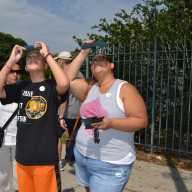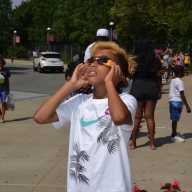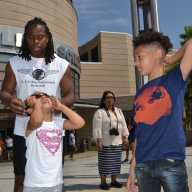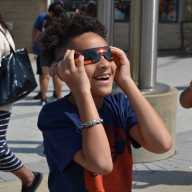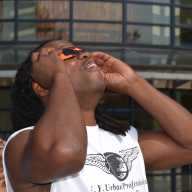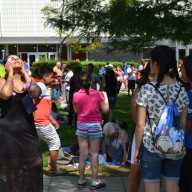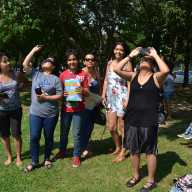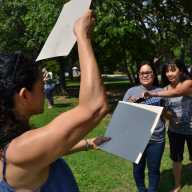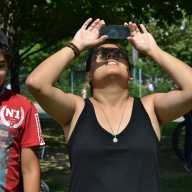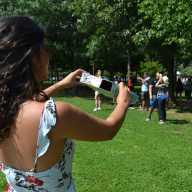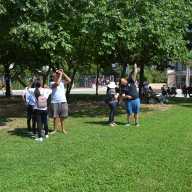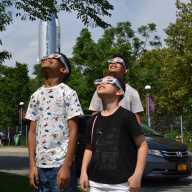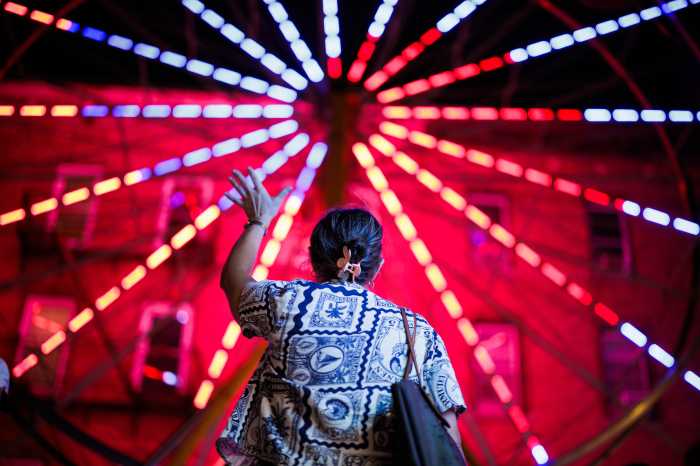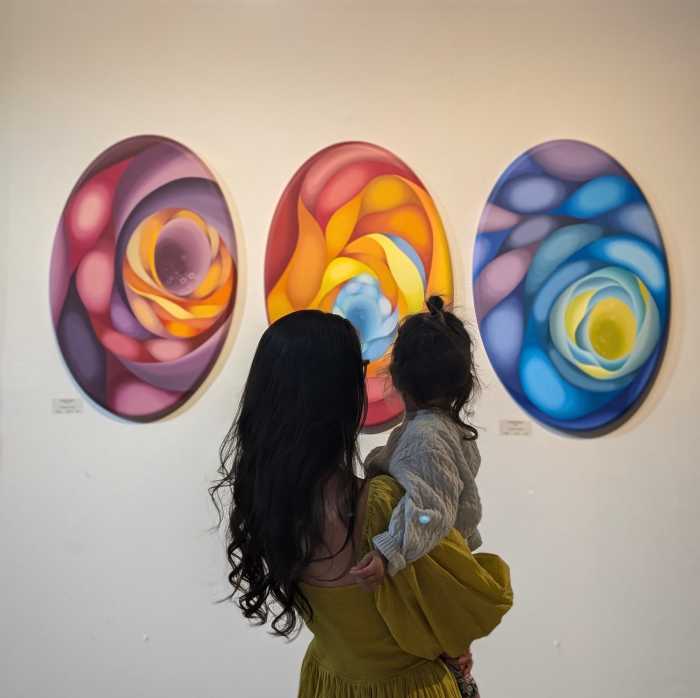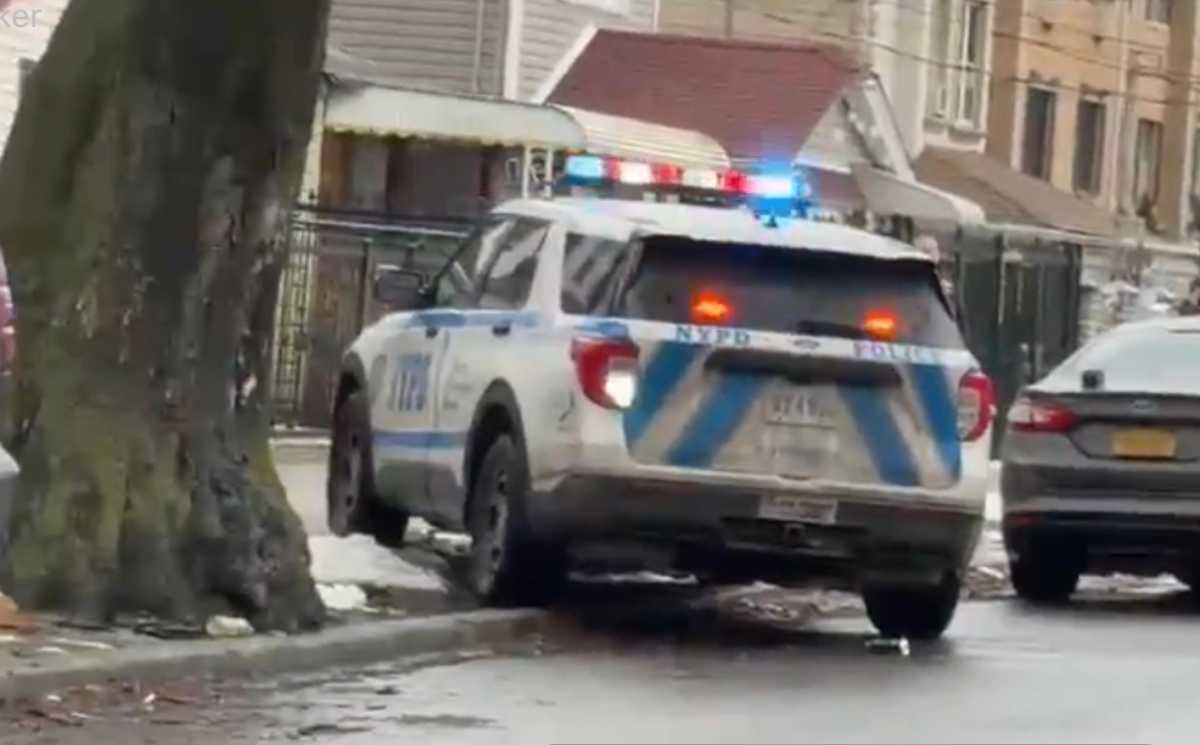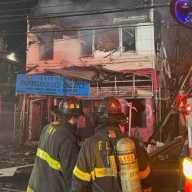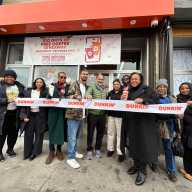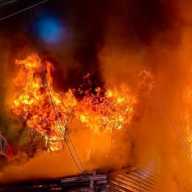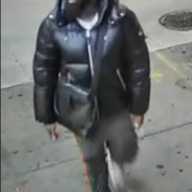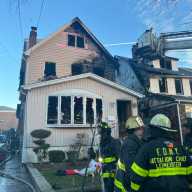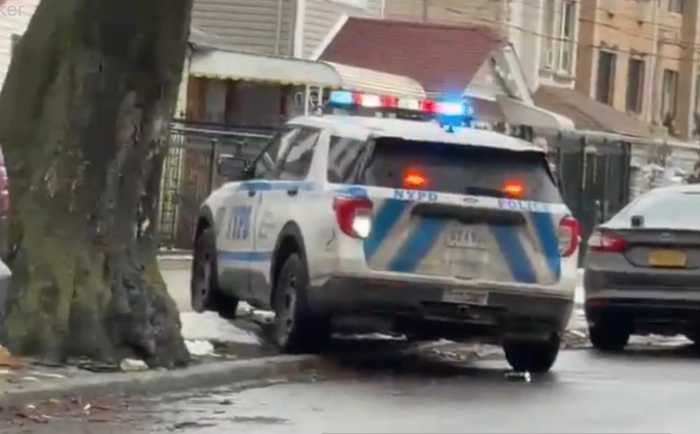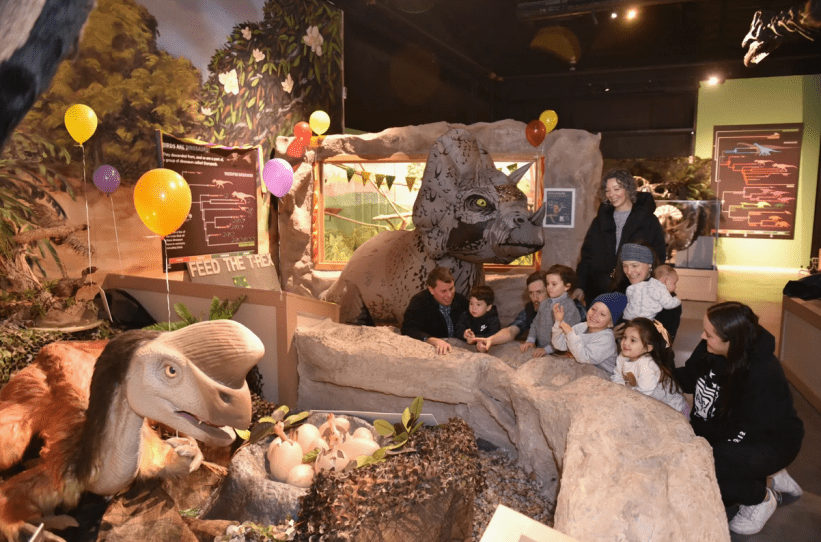Scores of people got a great glimpse at the “Great American Solar Eclipse” on Monday afternoon at the New York Hall of Science in Flushing.
People of all ages gathered at the Hall of Science, either inside the museum or on the front lawn, equipped with all kinds of devices to view the moon passing in front of the sun, which casts a shadow on the Earth.
Monday’s eclipse was the first in 99 years to pass across the entire continental United States. While Queens was outside the “path of totality” in which the moon completely blocked out the sun for a short amount of time, the borough experienced a partial eclipse that no less marveled many stargazers.
In the weeks leading up to the eclipse, people were trying to get their hands on special eclipse glasses which would safely allow wearers to view the celestial event without risking damage to their eyes.
Kids, parents, and even grandparents were passing glasses back and forth to take a look at the eclipse, which began being visible in New York at 1:23 p.m. and peaked at 2:44 p.m., with approximately 70 percent of the sun covered, with the completion coming at 4 p.m.
Eliot O’Neil, who was visiting family from Maryland, was excited to don his family’s protective glasses and see the eclipse.
“It’s really cool, and super bright,” the youngster said. “You’re not going to see it again for a long time.”
As locations ran out of glasses, Queens residents got crafty and created their own safe-viewing devices.
Giann Cortes, Violetta Ochoa, Angelina Beltran, Giulianna Barbero, and Zoila Caceres came from Elmhurst and Corona with an arsenal of devices to watch the eclipse.
The group had with them a cereal box outfitted with aluminum foil and a sheet of paper to watch as the moon passed the sun; two pieces of cardboard with holes punched through the center that they held up so the eclipse would cast a shadow on the cardboard; glass from a picture frame that was held over a flame to create an almost smokescreen effect on the glass; and even glass from a welder’s mask.
“We found how to make them on the Internet,” Beltran said of the makeshift devices.
Carolina Scaturro, Matthew Scaturro, and Gloria Villa came from Franklin Square to get a glimpse of the eclipse because they are members at the Hall of Science. They came prepared with sheets of X-ray paper which allowed them to look up at the sun without hurting their eyes.
“It is very exciting,” Scaturro said. “I did see a lunar eclipse once in Columbia with my mother, but this is different.”
If you missed out on Monday’s eclipse, you’re going to have to wait a while for the next one, which will take place on April 8, 2024.


